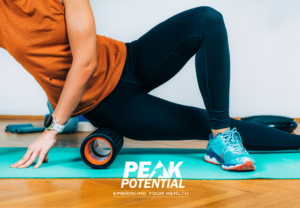
Over 20 million people visit their physician’s office each year with complaints from arthritis – and that number is growing. By 2040, it’s estimated that 78 million Americans will have doctor-diagnosed arthritis.
When we use this term “arthritis” we are most often referring to osteoarthritis, also known as degenerative joint disease, and this type makes up more than half of the above statistics. However, it’s important to realize that there is a second primary type called rheumatoid arthritis. The two are very different, but do have some similarities in symptoms and treatment.
Both types of arthritis affect the joints and can result in stiffness, pain, inflammation, and swelling. The big difference comes in the underlying cause of the disease.
Osteoarthritis (OA) is the most common form and involves the wearing away of cartilage that caps the bones in your joints. It’s a result of wear and tear over time.
Because of this, the symptoms usually occur in weight bearing joints and those you use most often like the hips, knees, and spine. These symptoms are also usually on just one side. The primary issues with OA include pain, swollen joints, impaired mobility, decreased movement, or grinding noises in the joints.
Rheumatoid arthritis (RA) is an autoimmune disease and can occur at any age or stage of life. With RA, your immune system sees your joints as the enemy and launches an attack on them. Where as a healthy immune system would only attack invaders like bacteria or viruses.
As a result, the synovial membrane that protects and lubricates the joints becomes inflamed, causing pain, swelling, and eventually joint damage. This usually starts in smaller joints and can affect both sides of the body equally.
In either case, joint pain can limit a persons ability to participate in their favorite activities, interrupt sleep, cause depression or fatigue, and significantly reduce quality of life. And in neither case do we have a “cure” to make the disease or degeneration disappear. However, there is a lot that can be done to halt the disease, decrease pain, and get a person back to living their best life.
Although prescription drugs, injections, and even surgery may be offered, we believe in finding solution whenever possible that are non invasive and free from side effects. Here are our top 5 arthritis solutions that we find have the most impact on pain control and quality of life.
-
Exercise
Although moving more may be the last thing you want to due when your joints are stiff and painful, it is critical in many ways. It increases strength and flexibility, reduces joint pain, and helps combat fatigue. Start slow and stick with low impact movements.
-
Maintain a Healthy Weight
Extra weight puts extra stress on your joints, so maintaining a healthy weight is important for joint health no matter the cause. In addition, weight loss has additional benefits of slowing down progression of rheumatoid arthritis.
-
Anti Inflammatory Supplements
Both types of arthritis involve joint pain, swelling, and inflammation, so anti inflammatory supplements will help calm down both conditions. This is a deep topic, so we will dive into this in another post next week, but if you want to explore what supplements will be safe and effective for you, take a free HIPAA protected online health assessment HERE (just click “YOUR PERSONALIZED VITAMINS” at the top of the page).
-
Nutritional Typing
There is no one diet that is best for arthritis. We must do what our body responds to the best. Our genes influence the ratio of fat, protein and carbohydrates your body needs to thrive. Therefore, learning your nutrition type and eating in a way that supports that is key to decreasing pain and inflammation. You can go by trial and error, or test to be sure when Nutrition DNA Testing. You can learn more about that HERE.
-
Therapy Treatments
Physical therapy for any type of arthritis aims to improve joint movement, strength in surrounding muscles to improve support, decreasing pain symptoms, optimizing mobility, and ultimately working toward keeping you doing all the things you love.
Whatever joint concerns you have, please know you aren’t facing an inevitable decline. There is a lot that can be done through movements, supplements, hand on therapy, and nutrition to slow, halt, or even reverse the damage.
If you are unsure whether physical therapy may be the next best step for you, we want to offer you a free eBook we have written with to 50 top questions and our answers about physical therapy. So, get your questions answered and then you can make a more informed decision about your health. Just click the link below for the free download.




